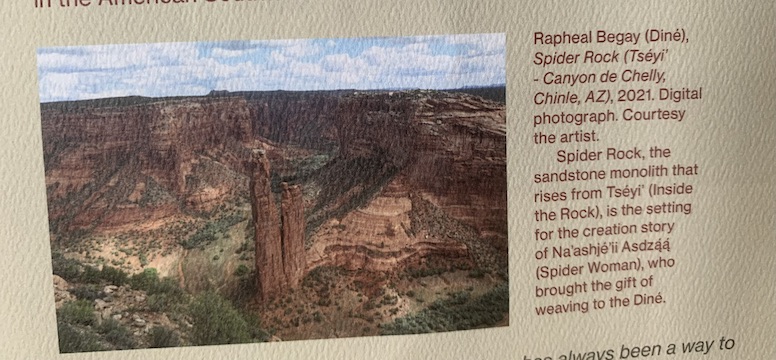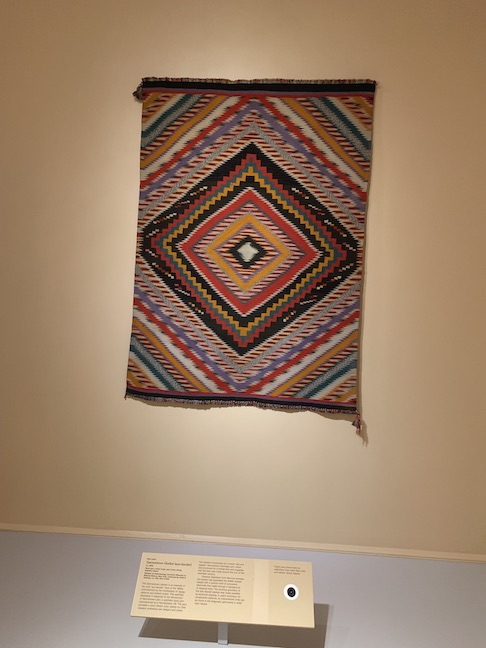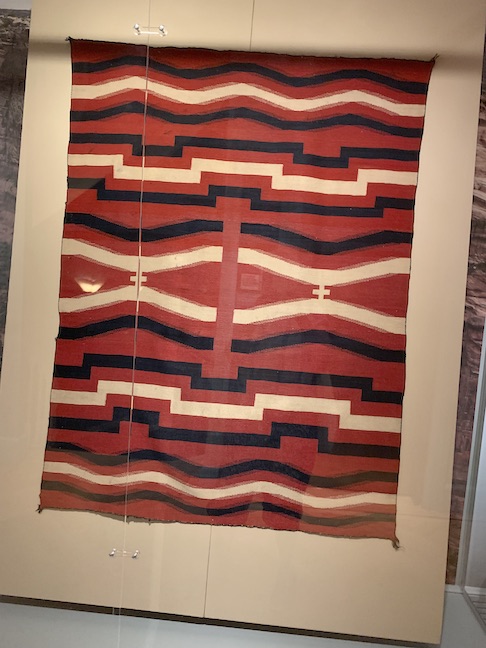~NAVAJO WEAVING / ‘Shaped by the Loom: Weaving Worlds in the American Southwest’ / BARD GRAD CENTER GALLERY / last weekend !!!!
the show opened to . . not much fanfare, but it’s a remarkable, quiet, thoughtful exhibit,
with some pretty – special examples.
it opened last Feb 17, which seems ages ago /
but, its last days are this . . . SAT & SUN, July 8 & 9, 2023.
our south-western frontier, with its old ways, and deeply felt, hand-made ‘craft work’, is quickly passing into history. this show not only lets us view some original, and very wonderful ‘artifacts’ in the up-close & real / but presents them with a kind of big, big west canyon silence, and spiritual awe.
not only are we shown how these weavings were made, we feel how they were crafted, imbued with the very spirit of the land, and the (mostly) Dine / Navajo peoples connection to it. Dine being the indigenous term for Navajo.
‘Shaped by the Loom: Weaving Worlds in the American Southwest’
curated by . . HADLEY JENSEN
BARD GRADUATE CENTER GALLERY, 18 WEST 86th STREET, UPPER WEST SIDE, NYC
HRS: THURS-SUN / 11am – 5PM
note: requires admission ticket / see website

from the exhibit booklet:
“RAPHEAL BEGAY (Dine), Spider Rock (Tseyi’ – Canyon de Chelly, Chinie, AZ), 2021. Digital photograph. Courtesy of the artist.
Spider Rock, the sandstone monolith that rises from Tseyi (Inside the Rock), is the setting for the creation story of Na’ashjeli Asdzaa (Spider Woman), who brought the gift of weaving to the Dine.”

Dine artist
ca. 1900
wool yarn, cotton warp, and cotton string,
tapestry weave.
Division of Anthropology, American Museum of Natural History, New York.
Collection by Uriah S. Hollister, ca. 1911.
exhibit label: “This Germantown blanket is an example of the vivid ‘eye-dazzler’ style of the 1880s, characterized by the combination of zigzag patterns and brilliant colors. This aesthetic developed in response to the introduction of Germantown yarn, a synthetic-dyed yarn manufactured by a Pennsylvania mill.”
note: and now, we know where the Amish/Pennsylvania Dutch ‘abstract’ quilters got their deeply bright colors from.

Dine artist,
Blanket, 1850s-70s.
Wool, tapestry weave.
Division of Anthropology, American Museum of Natural History, New York,
donated by Dr. Isabel Bittinger

William Pennington & Lisle Updike, ‘Navajo Shepherdess (wife of Hosteen Joe near her
hogan at Sanostee)’, ca. 1920-25. Photograph.
Courtesy H. Jackson Clark II, Toh-Atin Gallery, Durango, Colorado.
PHOTOS of the EXHIBIT: NANCY SMITH
